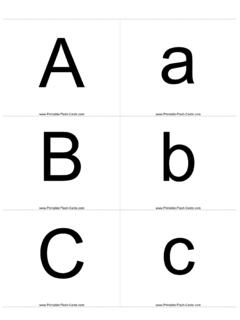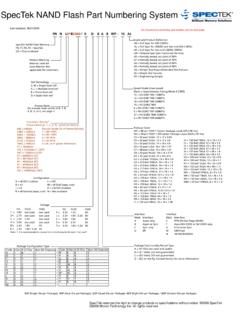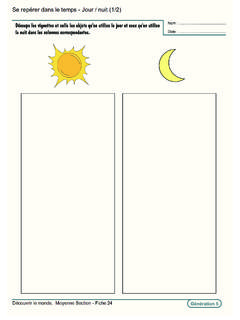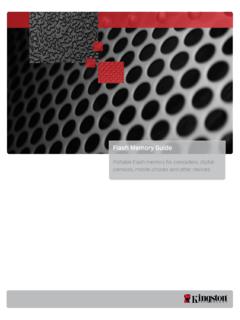Transcription of Flame Resistance and Arc Flash - TVSFPE
1 Flame Resistance and Arc FlashReview of Industry Consensus Standards for Personal Protective EquipmentGary S. KephartEnvironment, Safety & Health SupervisorBechtel Jacobs Co LLCG enesis of the Presentation Alphabet soup of standards; Opportunities for confusion? Cross disciplinary questions Can a welder assume arc Flash clothing is FR? Can an electrician be confident FR clothing has an arc rating? Are there tasks with both arc Flash and hot work hazards present? What PPE makes sense for emergency responders?FR Requirements & StandardsRules and Standards imposing PPE for a given task / hazard such as OSHA, NFPA, test methods for characterizing PPE/component capabilities, primarily ASTM.[Both categories have some parallel international standards. More on these later.]OSHA REGULATIONThe General Duty Clause: Employer shall furnish place of employment free from recognized Industry consensus standards likely to be perceived as the Standard of Care OSHA (a) [PPE].
2 PPE for eyes, face, head, and extremities, protective be provided, used, and whenever it is necessary by reason of of causing (l)(6)(iii): The employer shall ensure that each employee who is exposed to the hazards of flames or electric arcs does not wear clothing could increase the extent of injury that would be (l)(6)(iii): NOTE: Clothing made from the following types of fabrics, either alone or in blends, is prohibited by this , nylon, polyester, OSHA (a)(1)(i) [Electrical]: Employees working in areas where there are potential electrical hazards shall be provided equipment that is for the Arc Flash PPEA 1982 paper by Ralph Lee is credited as initiating attention to arc blast burn hazards as currently reflected in 2009 NFPA 70E Standard for Electrical Safety in the the Attention to Arc Flash ? Typical 100 amp, 3-phase, 480 V industrial circuit that faults can deliver 10000-to-15000 amps until the breaker opens.
3 Produces incident energy of about 12 cal/cm2at 1 ft. Enough to ignite typical cotton work clothes, melt synthetics; Burns often the Attention to Arc Flash ? In the typical arc Flash scenario, conceivable to have burn injury to about 50% of the total body surface area. American Burn Association statistics: 37% of burns to this much of the body surface result in 70E (2009) Employees shall wear FR clothing whenever there is possible exposure to an electric arc Flash above the threshold incident-energy level for a second-degree burn ( cal/cm2). NFPA 70 EIdentifies five classes of electrical scope with PPE requirements based on arc Flash hazard / Minimum Arc Ratingin cal/cm2 Arc Ratings of 4, 8, 25, and 40 cal/cm2commensurate with the for Electrical Safety in the Workplace During an arcing fault, electrical energy is converted to several other forms of energy. NFPA 70E does not define equipment for protection from the other forms of energy that are generated by an arcing Handbook for Electrical Safety in the Workplace Although arc-rated FR clothing provides protection from the thermal energy associated with an arcing fault, it should be considered to provide no protection from shock.
4 ANSI Z :2005 Safety in Welding, Cutting, and Allied Processes[American Welding Society]ANSI Z Clothing shall be selected to minimize the potential for ignition, burning, trapping hot sparks, or electric shock. Clothing shall provide sufficient coverage, and be made of suitable materials, to minimizeskin burns caused by sparks, spatter, or Z - advisory Clothing treated with Flame resistant materials may lose some of its protective characteristics after repeated Materials which can melt and cause severe burns should not be Frayed clothing is particularly susceptible to and should not be Standards Imposing FR PPE NFPA 1971, 2007 Standard on Protection Ensembles for Structural Fire Fighting and Proximity Fire FightingNFPA 2112, 2007 Standard on Flame -Resistant Garments for Protection of Industrial Personnel Against Flash FireAdditional Standards Imposing FR PPE Both NFPA 1971 and NFPA 2112 set minimum thermal protective performance (TPP) ratings for fabric or composite layers to protect the wearer from potential to receive a second degree burn.
5 [flashover versus arc Flash as the hazard orientation.]Key FR TerminologyThe Stoll Curve US Navy research published in 1969 relates tissue tolerance to heat to provide conversion between 2nddegree burn threshold and T on a calorimeter and mV on a thermocouple. Subsequently adopted as baseline for several ASTM FR test FR TerminologyThermal Protection Performance Rating Standard method assesses transmission of BOTH radiant and convective heat through material ( , turn-out composite). Output tracing is overlaid on the Stoll Curve and intersection is the TPP rating for that test specimen expressed in FR TerminologyArc Thermal Performance Value (ATPV) The incident thermal energy on the fabric at which there is 50% probability the wearer will suffer onset of 2nddegree burns. TPP for the special case of electric arc, expressed in FR TerminologyEnergy of break-open threshold (EBT) The incident thermal energy for which the fabric has 50% probability of break-open (holes) evidenced in the innermost FR TerminologyArc Rating -This value describes performance in exposure to electric arc; derived from the ATPV or from EBTif it occurs below ATPV.
6 Labels on arc-rated PPE should include the rating, in Materials StandardsASTM F1506-08 Standard Performance Specification for Flame -Resistant Textile Materials for Wearing Apparel for Use by Electrical Workers Exposed to Momentary Electric Arc and Related Thermal is the governing ASTM standard for Flame Resistant (FR) clothing (referenced by NFPA 70E). Requires: (1) afterflame and char length meet ASTM D6413 and (2) arc thermal performance tested i a w ASTM F1506 Requires FR apparel to contain a label indicating that it meets the standard s performance specifications, care instructions, fiber content, and arc rating (APTV or EBT)FR Materials StandardsASTM F1959/F1959M-06 Standard Test Method for Determining the Arc Rating of Materials for ClothingThis test method is used to measure the arc rating of materials intended for use as Flame resistant clothing for workers exposed to electric arcs that would generate heat flux rates from 2 to 600 F1959/F1959M-06 Heat transport response through the test specimen when exposed to the heat energy from an electric arc is assessed versus the Stoll curve.
7 Material response to an electric arc is indicated : breakopen, melting, dripping, charring, embrittlement, shrinkage, and/or Materials StandardsASTM F1958/F1958 MTest Method for Determining the Ignitability of Non- Flame -Resistant Materials for Clothing by Electric Arc Exposure Method Using MannequinsThis standard parallels F-1959 but with full garments tested on mannequins rather than material specimens mounted on test FR StandardsASTM F1891 06 Standard Specification for Arc and Flame Resistant RainwearASTM F2178 08 Determining the Arc Rating and Standard Specification for Eye or Face Protective Products ASTM F887 05 Standard Specifications for Personal Climbing Equipment (includes an arc test followed bya drop test)More FR StandardsASTM F1002 06 Performance Specification for Protective Clothing for Use by Workers Exposed to Specific Molten Substances and Related Thermal Hazards ( , foundry work)
8 ASTM F1449 08 Standard Guide for Industrial Laundering of Flame , Thermal, and Arc Resistant Clothing (Criteria when garments should be removed from service)More FR StandardsASTM F2302 - 08 Standard Performance Specification for Labeling Protective Clothing as Heat and Flame There s MoreIEC 61482 2:2009 Live Working Protective Clothing Against the Thermal Hazards of an Electric 6942:2002 Protective Clothing Protection Against Heat and Fire Method of Test: Evaluation of Materials and Material Assemblies When Exposed to a Source of Radiant There s MoreISO 9185:2007 Live Working Protective Clothing Assessment of Resistance of Materials to Molten Metal Splash. ISO 11612:2008 Protective Clothing Clothing to Protect Against Heat and & Challenges Both arc Flash and flashover protection standards share same end-point: survivable 2nddegree burn injuries. Consequently they also share same critical constraint: PPE MUST always accompany other PREVENTIVE measures and & Challenges Real-world work environments often present mixed hazards.
9 Some PPE not available or no established spec for Flame Resistance . NEC and NFPA invoke AHJ involvement in these determinations; Although technical decisions, they may also involve worker emotions & & Challenges Real-world work environments often present mixed hazards. Some PPE not available or no established spec for Flame Resistance . Outcome of such decisions needs to be carefully communicated; Very difficult NOT to send mixed messages, even with best intention to do the right & Challenges Metal jewelry and synthetic undergarments may both invite informal or don t-ask/don t-tell approaches -- as incursions on worker privacy, religion, etc. Important that the workers recognize that non-compliance can carry very significant and painful & Challenges Arc-Rated PPE IS Flame Resistant; May or may not be suited to hot work or other non-electrical scopes. HOT-Work coveralls and associated PPE is NOT necessarily arc-rated; Likely NOTappropriate for electrical & Challenges Industrial Laundry processes may be compatible with all PPE in-service but onus is on the employer to assess (and document) laundry compatibility.
10 Tracking number of laundry cycles can be accomplished, but ..Overlaps & Challenges Emergency Responders: Where scope of hazards can t be readily predicted, turn-out gear is a great compromise. Challenge then is to make sure wearers and incident commanders appreciate capabilities and limitations of the Issues Arcing electrode orientation (horizontal or vertical) impacts incident energy level. Some orientations may exceed ASTM method energies. Open air arc- Flash model probably underestimates energy from enclosures or in vaults.
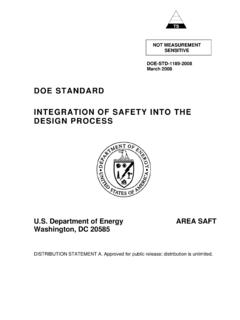
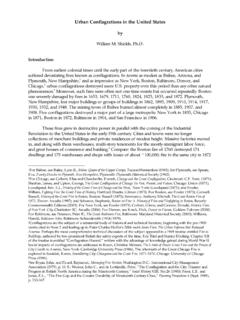
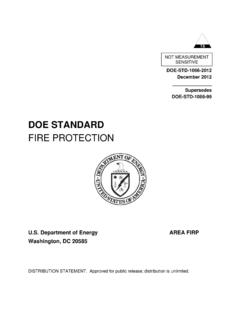
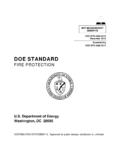
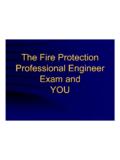
![SFPE Equation Sheet [KL 10-19-2015]](/cache/preview/c/f/3/c/2/1/e/4/thumb-cf3c21e48064d8fdafc6507dedc08886.jpg)
